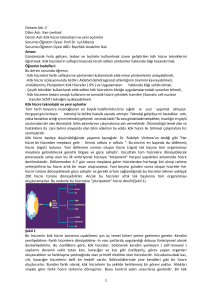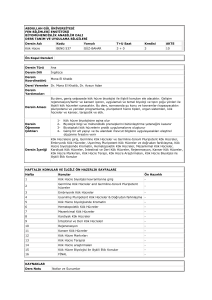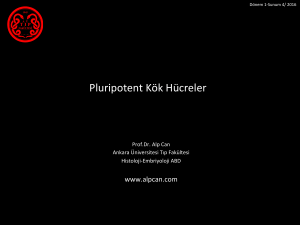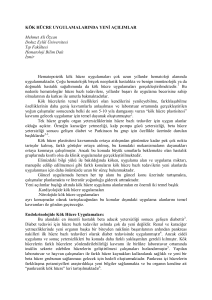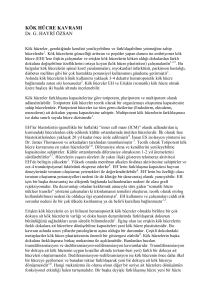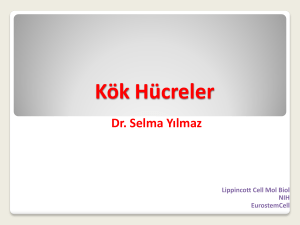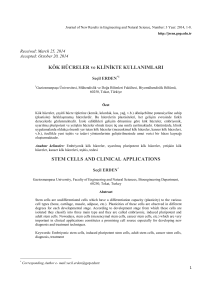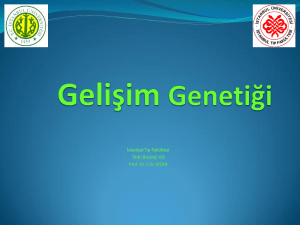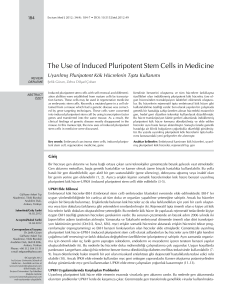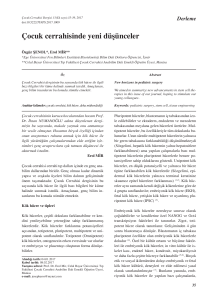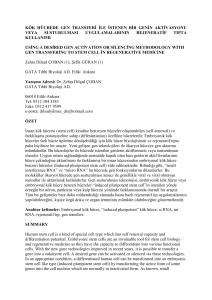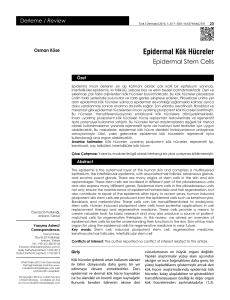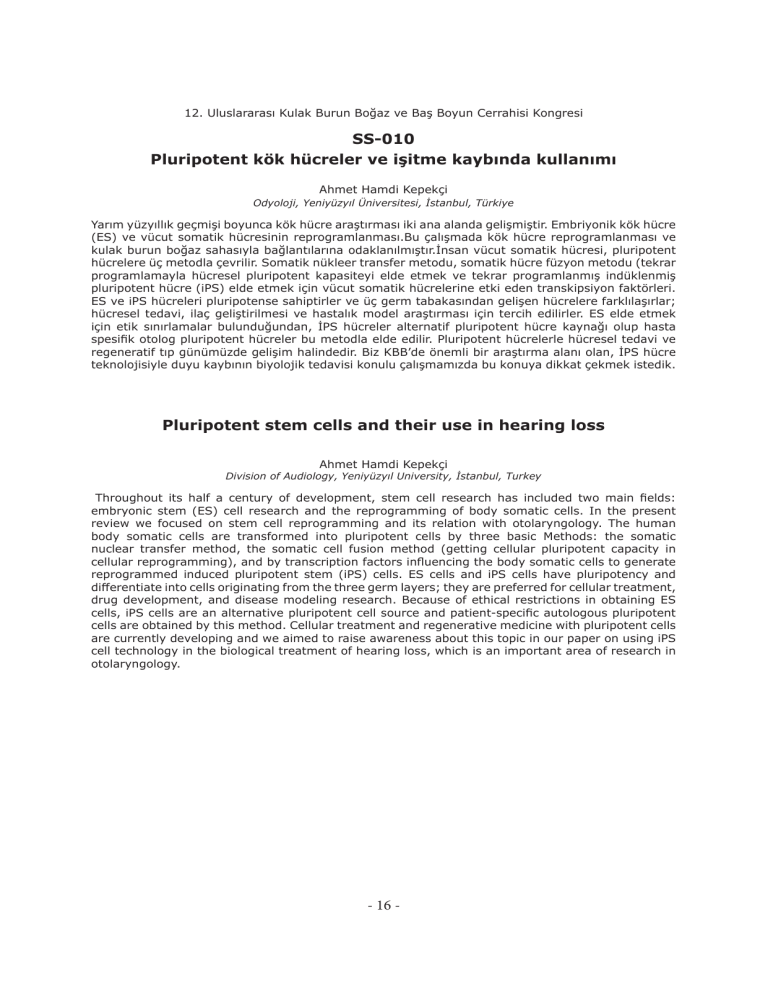
12. Uluslararası Kulak Burun Boğaz ve Baş Boyun Cerrahisi Kongresi
SS-010
Pluripotent kök hücreler ve işitme kaybında kullanımı
Ahmet Hamdi Kepekçi
Odyoloji, Yeniyüzyıl Üniversitesi, İstanbul, Türkiye
Yarım yüzyıllık geçmişi boyunca kök hücre araştırması iki ana alanda gelişmiştir. Embriyonik kök hücre
(ES) ve vücut somatik hücresinin reprogramlanması.Bu çalışmada kök hücre reprogramlanması ve
kulak burun boğaz sahasıyla bağlantılarına odaklanılmıştır.İnsan vücut somatik hücresi, pluripotent
hücrelere üç metodla çevrilir. Somatik nükleer transfer metodu, somatik hücre füzyon metodu (tekrar
programlamayla hücresel pluripotent kapasiteyi elde etmek ve tekrar programlanmış indüklenmiş
pluripotent hücre (iPS) elde etmek için vücut somatik hücrelerine etki eden transkipsiyon faktörleri.
ES ve iPS hücreleri pluripotense sahiptirler ve üç germ tabakasından gelişen hücrelere farklılaşırlar;
hücresel tedavi, ilaç geliştirilmesi ve hastalık model araştırması için tercih edilirler. ES elde etmek
için etik sınırlamalar bulunduğundan, İPS hücreler alternatif pluripotent hücre kaynağı olup hasta
spesifik otolog pluripotent hücreler bu metodla elde edilir. Pluripotent hücrelerle hücresel tedavi ve
regeneratif tıp günümüzde gelişim halindedir. Biz KBB’de önemli bir araştırma alanı olan, İPS hücre
teknolojisiyle duyu kaybının biyolojik tedavisi konulu çalışmamızda bu konuya dikkat çekmek istedik.
Pluripotent stem cells and their use in hearing loss
Ahmet Hamdi Kepekçi
Division of Audiology, Yeniyüzyıl University, İstanbul, Turkey
Throughout its half a century of development, stem cell research has included two main fields:
embryonic stem (ES) cell research and the reprogramming of body somatic cells. In the present
review we focused on stem cell reprogramming and its relation with otolaryngology. The human
body somatic cells are transformed into pluripotent cells by three basic Methods: the somatic
nuclear transfer method, the somatic cell fusion method (getting cellular pluripotent capacity in
cellular reprogramming), and by transcription factors influencing the body somatic cells to generate
reprogrammed induced pluripotent stem (iPS) cells. ES cells and iPS cells have pluripotency and
differentiate into cells originating from the three germ layers; they are preferred for cellular treatment,
drug development, and disease modeling research. Because of ethical restrictions in obtaining ES
cells, iPS cells are an alternative pluripotent cell source and patient-specific autologous pluripotent
cells are obtained by this method. Cellular treatment and regenerative medicine with pluripotent cells
are currently developing and we aimed to raise awareness about this topic in our paper on using iPS
cell technology in the biological treatment of hearing loss, which is an important area of research in
otolaryngology.
- 16 -
12. Uluslararası Kulak Burun Boğaz ve Baş Boyun Cerrahisi Kongresi
İps hücrelerin nasıl üretildiğinin planı ve işitme kaybının gen tamiri ile tedavisi ve
hastalık modellemesine uygulanabilirliği.
The scheme of how iPS cells are produced and can be applied in disease modeling and
gene correction for the treatment of hearing loss.
- 17 -

